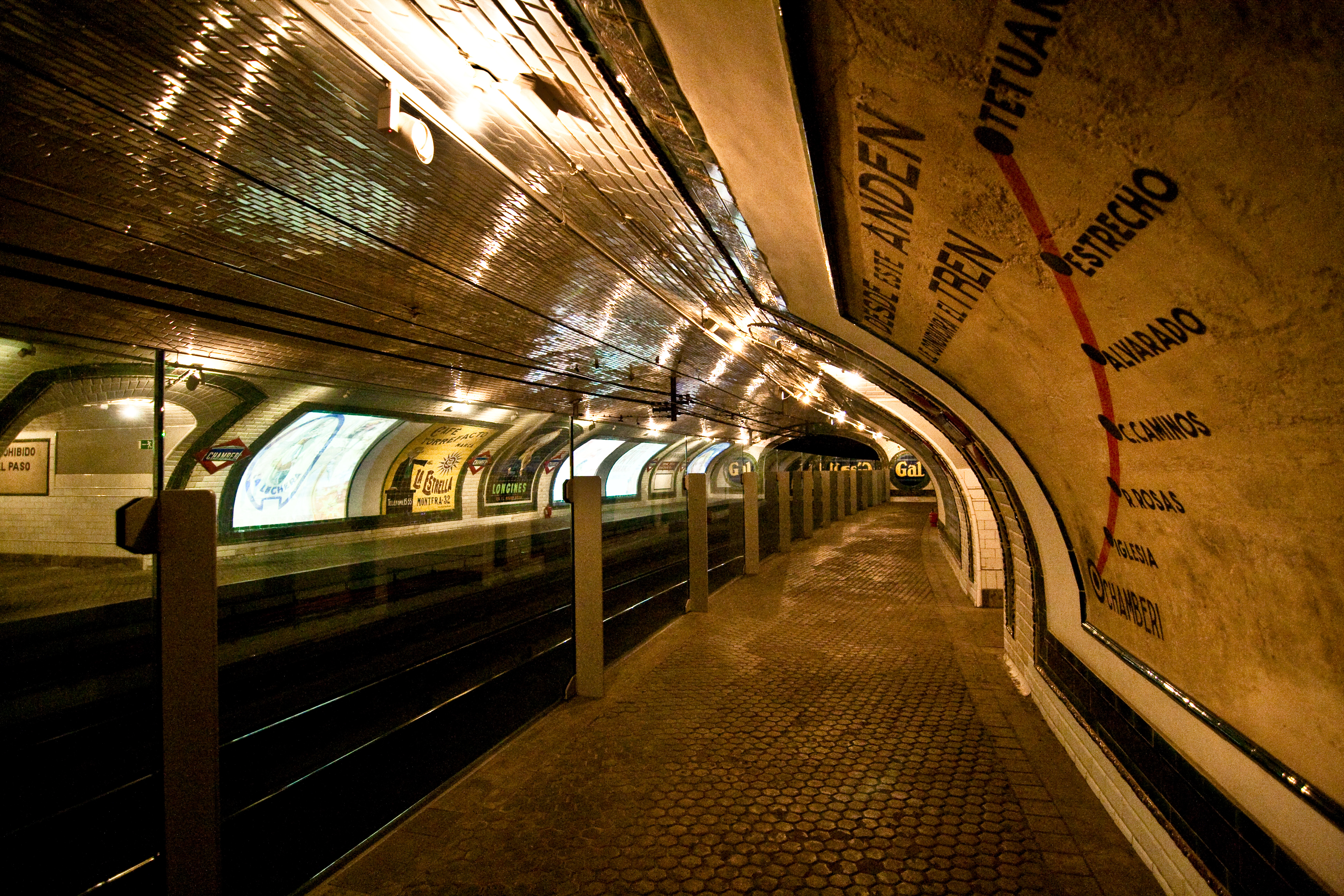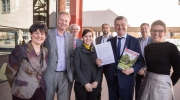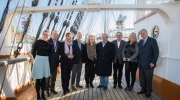Industrial and Engineering Heritage Committee visits Madrid’s Waterworks and Metro
The traditional industrial heritage excursion this year went to Madrid’s Waterworks and the city’s Metro Transport System. The original waterworks “Canal Isabel II”, founded in the 1850s, could not provide water to the ever higher built apartment-blocks in the early tens of the twentieth century in Madrid, reason why a huge water tower was built at one of the highest locations in the city in 1912. In 1952 it was abandoned but in 1986 the tower was converted into a cultural space for exhibitions. The conversion and the fine restoration was recognised and awarded by Europa Nostra in 1992, the year that Madrid was European Capital of Culture.
Madrid’s Metro, inaugurated by King Alfonso XIII in 1919, is the oldest subway system in Spain and one of the 10 oldest in the world. The subway represents a combination of modern still good functioning, partly preserved but also not fully recognised and hence endangered industrial heritage. This became clear when the group visited the original depot and workshop at Cuatro Caminos. There a small group of Spanish industrial heritage students and supporters joined the Europa Nostra Congress participants, resulting in an interesting exchange of views, also with Metro officials who explained the Company’s plans, on how Cuatro Caminos could best continue functioning as the Metro’s central depot after 96 years of non-stop use.
From the depot the whole group was transported by a special metro-carriage to one of the oldest subway-stations on the original line, Chamberi, not in use anymore, since the 1960s all trains run through this “ghost”-station without stopping. But the Europa Nostra train did stop and all passengers had to leave the train very quickly because a next train could come up any moment behind us. The atmosphere in Chamberi station is one reminiscent of the 1960s with outdated ticket machines and tourniquettes, very dated old-fashioned wall advertisements and a lot of dust; only when a illuminated train came rumbling through the station at full speed, there was light flashing along the station’s tiled walls for a short time, otherwise complete darkness.
In the beginning years of the Metro, electric power for the trains came from the municipality grid system. In the 1920s though, Metro built its own electric power-generation system in a new special building Nave de Motores, very near its station Pacifico. Here 3 huge diesel engines generated electricity for the metro before its net expanded rapidly in the 1960s and 70s. Today, it is a museum.
Last stop at the excursion was a short visit to the original metro-passenger hall of Pacifico station with its deep-blue coloured walls and gold-like ornaments from the 1930s, hidden behind secret doors in the concrete walls of Pacifico-station of today.
The Metro Transport System’s Heritage Department is responsible for the conservation of the emblematic industrial heritage at Cuatro Caminos, at Chamberi ghost station, at Nave de Motores and at Pacifico station. The intention is making it all an integral part of the collection of a Metro Transport Museum planned to be opened at the occasion of the Metro’s centennial in 2019.
A highly informative role in the whole excursion was played by the young architect Alvaro Bonet, individual member of Europa Nostra, who planned the visit together with IEHC member Eusebi Casanelles. Hosting the excursion were Pierre Laconte and David Morgan, tour leader was Founding IEHC Secretary Rienko Wilton.







